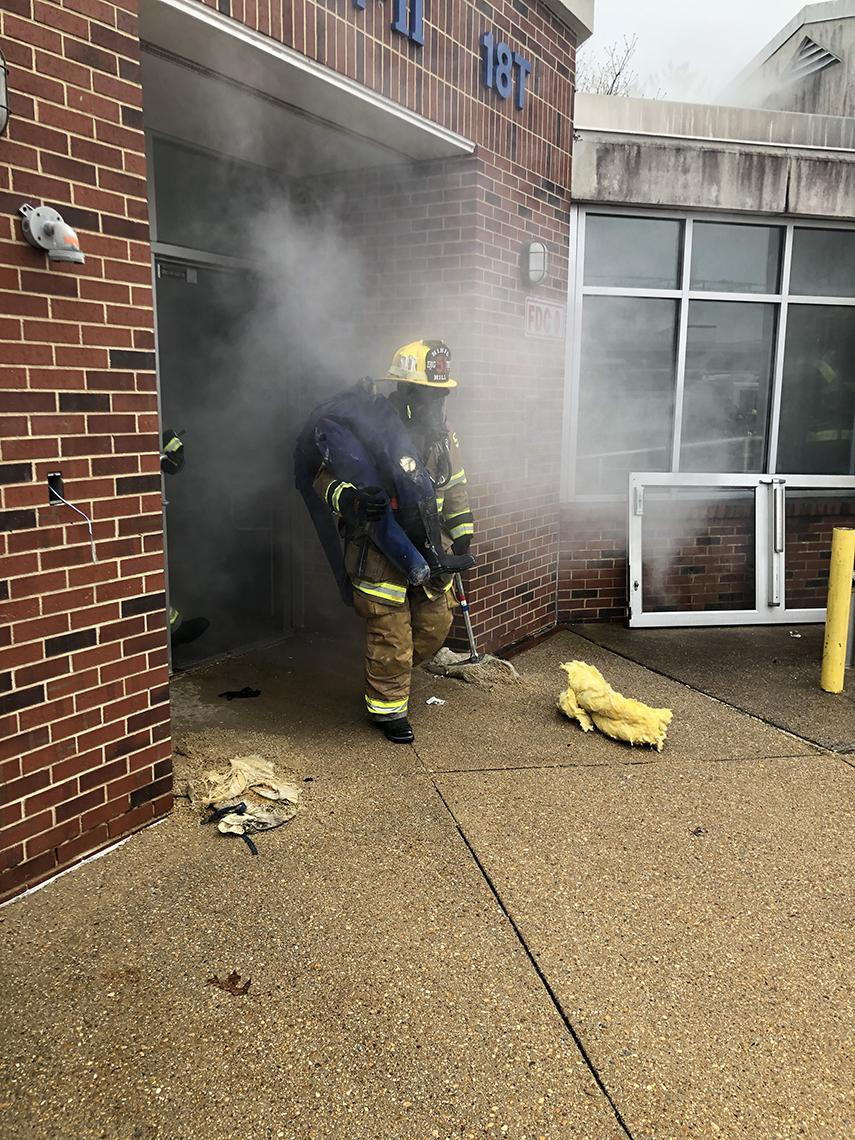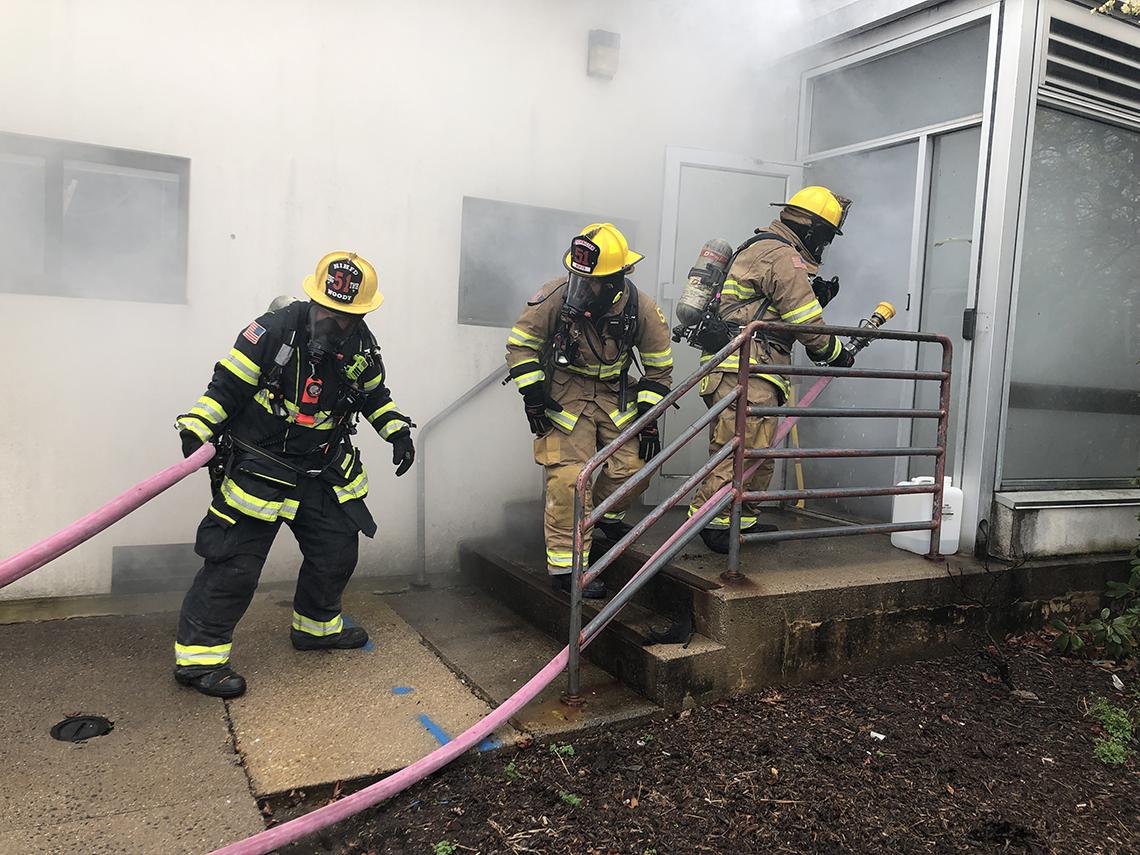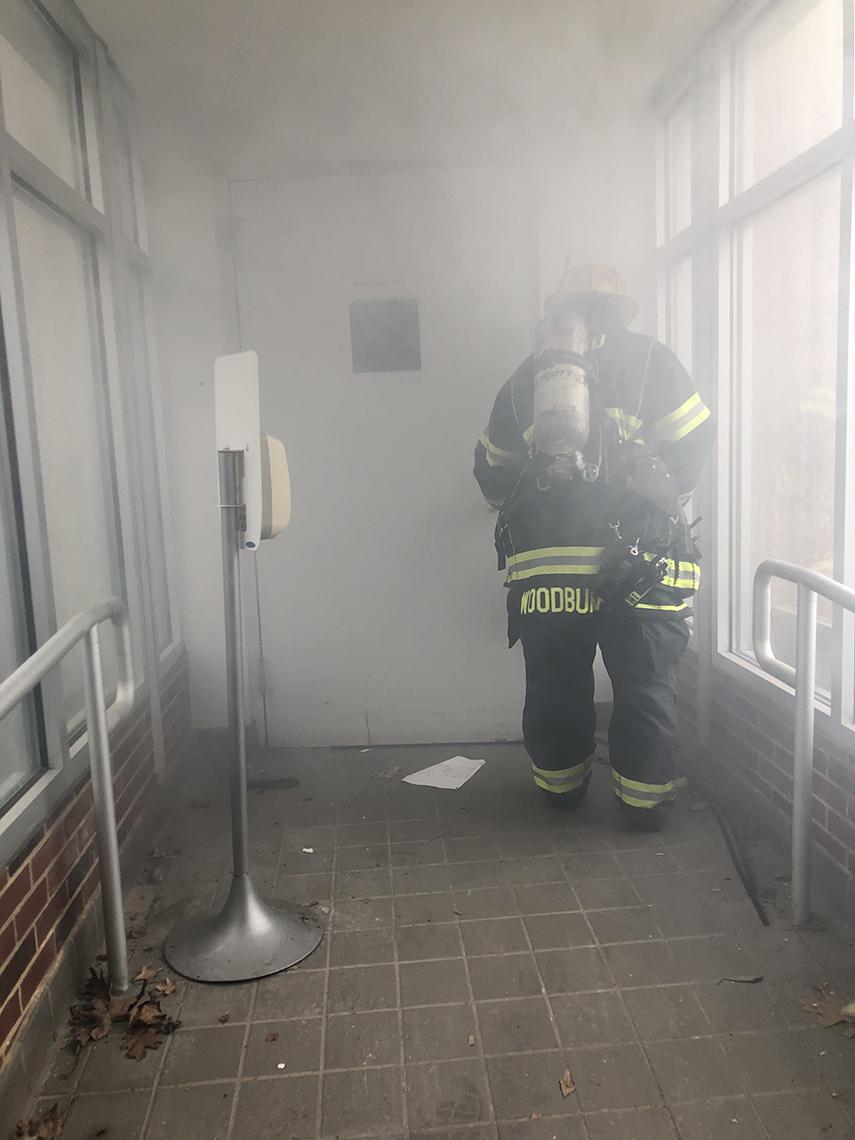NIHFD Trains
‘Our Bar Is Higher,’ Says Fire Department Captain
All of that construction on campus has a silver lining: the NIH Fire Department (NIHFD) can practice their firefighting skills on decommissioned buildings that are scheduled to be demolished. Such is the case with several of the recently demolished buildings on the south end of the Bethesda campus.
“Because the NIHFD doesn’t have their own training center, we rely on opportunities such as building demolitions [to use as temporary training sites],” NIHFD Capt. John Daffron explained. Bldgs. T39 (the former fitness center) and old labs 18 and 32 all filled a crucial need for the NIHFD in the structures’ final days.
NIH hires only experienced firefighters, but they continue to participate in various training exercises (at NIH and other fire departments throughout Maryland) to keep them primed for any situation.
NIH is also a unique place to be a firefighter, Daffron added, because of the nature of the facility. Firefighters must be able to tackle environments as diverse as a research hospital, biosafety level 3 laboratories, an underground Metro station, childcare facilities, residential housing and more, all with as many as 21,000 employees working on site in various occupations. The NIHFD also has mutual aid agreements with its neighbor, Walter Reed National Military Medical Center, and the fire departments for Montgomery County.
“Our bar [for training] is higher because it has to be,” Daffron said.
NIH currently employs 30 firefighters. They work a unique schedule: 48-hour shifts with 72 hours off, for a total of 144 hours per pay period. There are a minimum of 10 firefighters working each shift, which is enough to operate the company’s fire engine, ladder truck, hazmat truck and ambulance at each call.
There are countless scenarios that can require any combination of this equipment. In a recent training session, firefighters went through drills on forced entry, smoke ventilation, breaching walls and running hose lines.
One deceptively simple exercise involves breaking into locked rooms.
“People’s creativity for locking and securing doors is infinite,” Daffron said, and firefighters need to figure out how to gain entry. Members practiced breaking padlocks with axes and Halligan bars—multipurpose forcible entry tools used for prying, twisting, punching or striking.
In another exercise, firefighters used a non-toxic smoke machine to simulate a fire inside one of the wings of Bldg. 18. Live fire trainings typically do not happen on campus due to environmental concerns, but the smoke machine did an admirable job of filling the hallway and rooms with thick smoke. Firefighters entered the building, broke a window to ventilate and cut through the smoke with water. They also rescued a dummy that had been placed inside.
Moral of the story? Waste not, want not. Even decommissioned buildings have a purpose.



